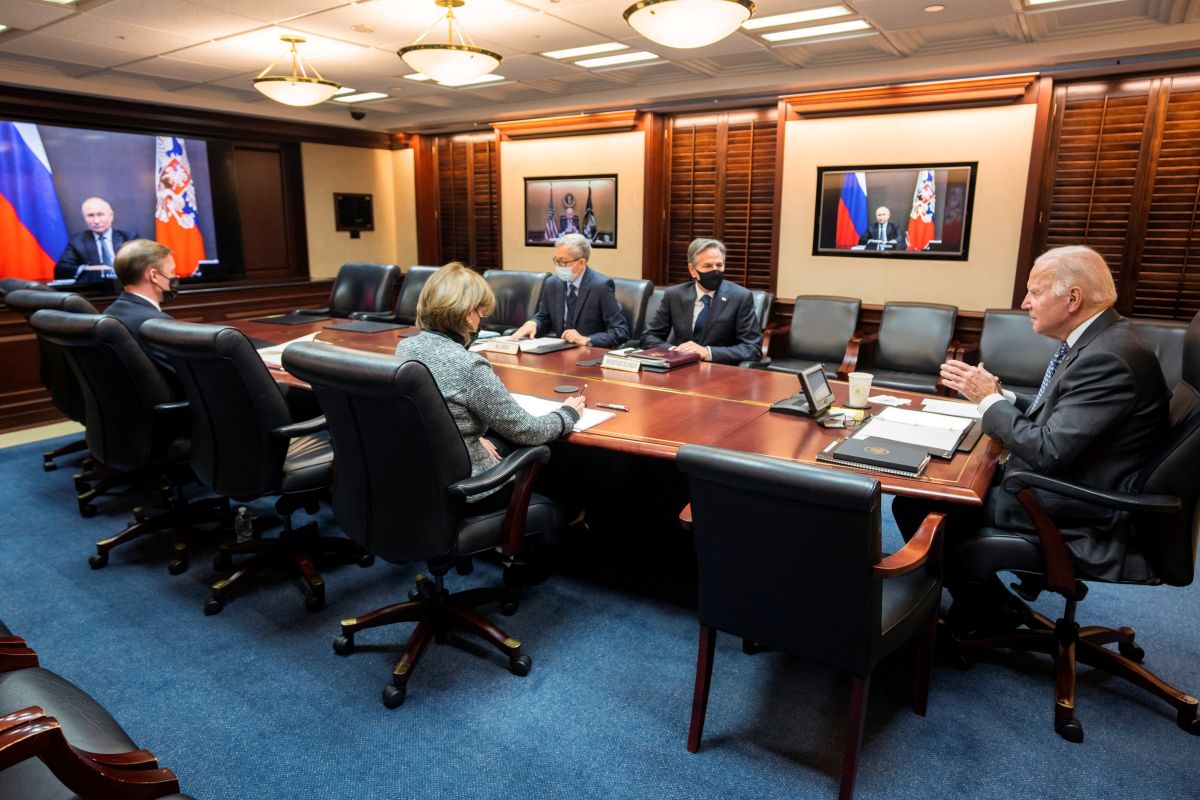Biden and Putin Meet Online
On 7 December, the U.S. and Russian presidents, Joe Biden and Vladimir Putin, met for the second time as heads of state, this time by videoconference. While the meeting was a U.S. initiative, it came in response to Russia’s actions, particularly its concentration of troops on the border with Ukraine and demands for security guarantees regarding the non-enlargement of NATO to the east.
 Fot. HANDOUT/Reuters/Forum
Fot. HANDOUT/Reuters/Forum
Why did Biden and Putin meet?
Their virtual conference was primarily driven by the West’s need to de-escalate the tensions in Eastern Europe given the concentration of more than 100,000 Russian troops near the border with Ukraine. American intelligence provided NATO allies with in-depth information about Russia's possible preparations for a new invasion of Ukraine. The Russians rejected these accusations, but Putin issued an ultimatum to his Western partners about impassable “red lines” and demanded guarantees not to expand NATO eastward. Recent American pledges of U.S.-Ukraine defence cooperation are viewed by Russia as an expansion of NATO and a betrayal of the understanding from last June’s Biden-Putin meeting in Geneva.
What is Putin’s goal?
For Russia, the virtual meeting was meant to show its European partners and the Ukrainian government that Putin had the capacity to force Russia-U.S. talks on European security. Russia’s main goal is to set in motion a political process that would allow for a new conference—and ultimately the adoption of a treaty—on Europe’s security architecture. Russia believes this will lead to the recognition by the U.S. and its NATO allies and partners of the post-Soviet area as a region of Russia’s special security interests (i.e., control). Subsequent talks between the U.S. and Germany, Italy, France, and the UK may indicate preparations for consultations with the most important American partners in Europe on policy towards Russia, and which may not directly consider the interests of NATO’s Eastern Flank countries. However, NATO is unlikely to accept in legal form a Russian buffer zone.
What did Biden want to achieve by talking to Putin?
Biden appears to try to de-escalate the situation by presenting the costs to Russia of any new invasion of Ukraine. Most likely, they include economic sanctions on the banking and energy sectors, as well as personal sanctions targeting Russian oligarchs and their families. The implementation of these mechanisms could be more effective as it would be coordinated with the EU and the UK. In addition, Biden threatened to transfer new weapons to Ukraine and to strengthen the presence of U.S. troops on NATO’s Eastern Flank. The conversation at the highest level is a manifestation of the U.S. administration’s determination to resolve problems in relations with Russia through diplomatic channels. Biden did not make any assurances about concessions to Russia. The issue of de-escalation at the border with Ukraine is then to be discussed by both sides at lower levels. From the American point of view, Putin’s personal involvement in the direct talks and the maintenance of the intergovernmental dialogue are intended to prevent Russia from escalating the situation in the coming months.
What next for Ukraine?
The Biden-Putin talks do not eliminate the threat of a new Russian military invasion of Ukraine. In a statement after the meeting, the Russian side accused NATO of undertaking dangerous attempts to gain a foothold on Ukrainian territory and building up its military capabilities along the Russian border. However, Biden reaffirmed the importance of preserving Ukraine’s territorial integrity and announced additional defensive measures for the country in case Russia launches a new invasion. Additionally, Biden and Ukrainian President Volodymyr Zelensky are scheduled to talk on 9 December. However, an internal compromise in Congress has led to the removal from the final draft of the U.S. defence budget the sanctions on the Nord Stream 2 gas pipeline, which is critical to Ukraine’s security. Still, sanctions on the pipeline could be implemented through other procedures if Russia intensifies military action in Ukraine.
What does the meeting mean for Poland?
The meeting of the presidents made it possible to present the common position of the U.S. and its NATO allies. Support for the territorial integrity of Ukraine and the announcement that the Alliance would continue strengthening its military presence on the Eastern Flank in the event of an escalation in Ukraine confirm that the U.S. perceives Russia’s recent actions as a real threat requiring action to be taken together with European countries. The expressions also confirm the implementation of policy towards Russia declared by the Biden administration. However, the U.S. process of consultations with larger allies without including NATO’s Eastern Flank states may risk cohesion and an agreement on plans to force a de-escalation, which penultimately will weaken the security of the countries neighbouring Russia. If the U.S. makes concessions that lead to the informal creation of a military buffer zone that encompasses NATO’s Eastern Flank, including Poland, in which the stationing of military forces and the deployment of allied armaments would be limited, it would severely divide NATO and weaken mutual security guarantees, leading to the loss of the Alliance’s importance.



